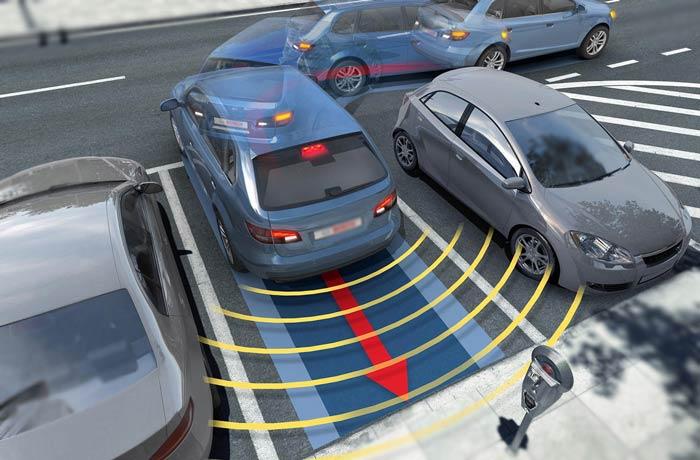
The system will park you
Theoretically, the problem of protecting the car body when reversing is solved.
Ultrasonic sensors located in the car's rear bumper measure the distance to the nearest obstacle. They begin to work when reverse gear is engaged, informing the driver with an audible signal that an obstacle is approaching. The closer the obstacle, the higher the frequency of the sound.
More advanced versions of sonar use optical displays that show the distance to an obstacle to within a few centimeters. Such sensors have long been used as standard equipment in higher-end vehicles.
The on-board TV can also be useful when parking. This solution has been used by Nissan for some time in its premiere. The rear camera transmits the image to a small screen in front of the driver's eyes. However, it should be recognized that ultrasonic sensors and cameras are only auxiliary solutions. It happens that even experienced drivers with the help of sonar have problems with proper parking or accurate reverse in crowded parking lots and streets.
The work carried out by BMW is aimed at a complete solution to the problem. The idea of the German researchers is to minimize the role of the driver when parking, and entrust the most complex actions to a specialized system. The role of the system begins when looking for a free space, when the car passes along the street where the driver is going to stop.
A sensor on the right side of the rear bumper continuously sends out signals that measure the distance between parked vehicles. If there is enough space, the car stops in a position that is most convenient for skidding into the gap. However, this activity is not assigned to the driver. Reverse parking is automatic. The driver does not even keep his hands on the steering wheel.
Far more challenging than parking in the back can be finding a parking spot in the area you're going to. This problem can be solved by constantly monitoring parking lots and transmitting information, for example, via the Internet, to which well-equipped cars are increasingly connected.
In turn, information about the shortest path to the parking lot can also be obtained thanks to a small device for receiving satellite navigation signals. Isn't it true that in the future everything will be much easier, although more difficult?
